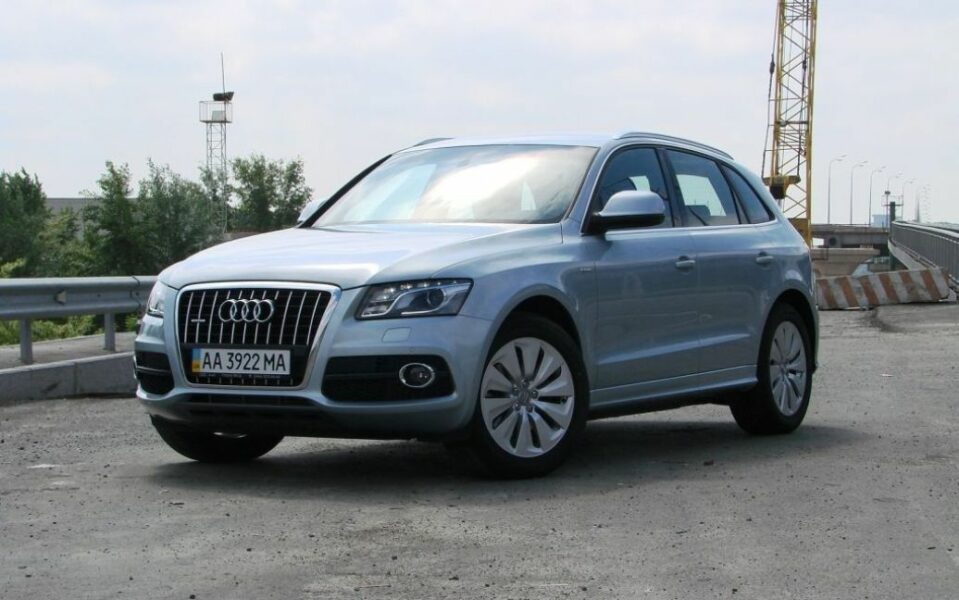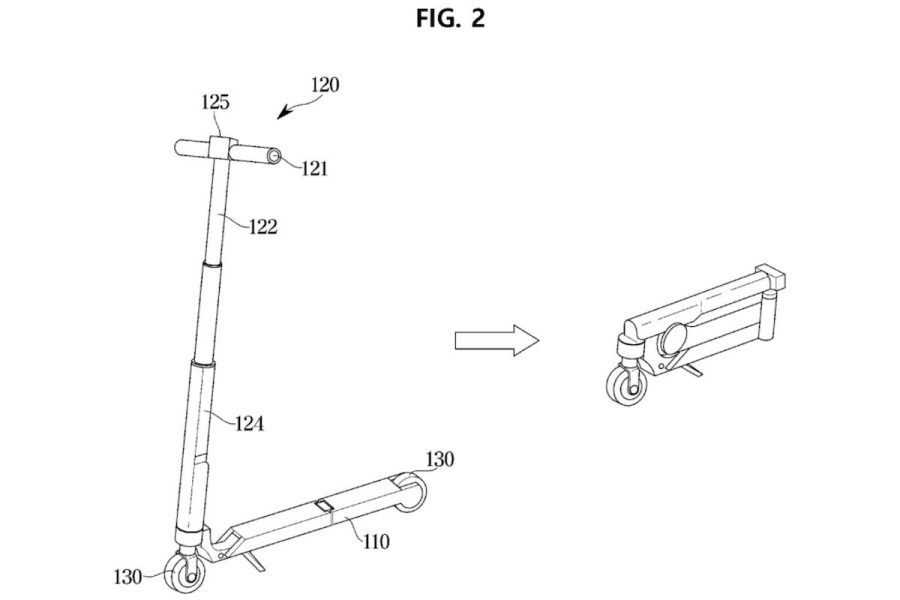
Test: Audi Q5 Hybrid
But it should be noted that hybrid drive is also present in the vehicle, so that the performance of the vehicle can remain the same as a larger gasoline engine with better fuel economy.
Like the Audi Q5 Hybrid Quattro. Powerful (a maximum of even 245 "horsepower" of the system's power), of course with four-wheel drive, but relatively low consumption.
Audi has developed an interesting combination for its hybrid trek: a four-cylinder petrol turbo is complemented by an electric motor (40 kW and 210 Nm), which is housed in the same housing as the eight-speed automatic transmission, and then power is sent via a center differential to all four wheels.
The clutch between the electric motor and the petrol engine ensures the connection of the electric motor. This is the first time a lithium-ion battery is stored under the bottom of the trunk and remains the same as in the regular Q5, except there is no extra storage box under the floor of the trunk, which would otherwise ensure that it will remain in the enlarged flat-bottomed barrel.
An additional, rather large space next to the battery in the rear is occupied by a special cooling element, which ensures that the required operating temperature is constantly maintained. It should be noted that Audi designers try very hard to ensure that all vital parts of the car are always operating at the correct temperature, so the engine compartment also has a cooling system for the electronics and water cooling for the electric motor.
Audi guarantees that in one of the driving modes, electric, which is selected by pressing a button on the center console, you can also drive electrically, but this is only possible for a few kilometers.
When driving around the city with a maximum speed of 60 km / h, the range of such a ride in our tests was a maximum of 1,3 km (on average 34 km / h), which is slightly less than promised at the factory.
The same is true with our results on consumption: while striving to achieve a minimum, but at the same time participate in the flow of urban transport, it was about 6,3 liters per 100 kilometers, while the average was 3,2 liters more.
With a longer driving on the highway (maximum speed is limited to 130 km / h), the powerful four-cylinder engine “burned” a little more than 10 liters per 100 kilometers.
This might sound like a lot for a hybrid car, but keep in mind that this Q5 weighs just under two tons. Audi designers managed to reduce weight by several tens of kilograms compared to the only real competitor, the Lexus RX 400h, especially since the latter does not load the propeller shaft and both rear drive shafts, because this Lexus hybrid is only electric. This is likely due to the lighter lithium-ion batteries, as well as probably some parts of the aluminum body (tailgate and hood).
Anyone looking for fuel economy in the Q5 will likely opt for the turbo diesel version. The Q5 Hybrid Quattro will especially appeal to those who want a sufficiently powerful and maneuverable vehicle.
The 245 "horsepower" system power and 480 Nm of total torque only work occasionally when we really need it, and then it seems that the car really just blinks when we press the accelerator pedal.
However, as I mentioned earlier, we consume electricity from the battery as quickly as possible, and then we again have a 155 kilowatt gasoline engine. We can't complain about its power and sharpness is still guaranteed.
It can also be useful for driving pleasure, especially when cornering is not an issue. Full-time all-wheel drive gives the feeling of being on the rails, especially on wet road surfaces.
Audi didn't compromise on more economical tires either, the 19-inch Bridgestone was just right. The combination of larger wheels (with oddly designed standard alloy wheels) and a rather stiff, certainly sportier suspension is the only thing that deserves serious comment for the more comfort-oriented driver.
Potholes appear on Slovenian roads more and more often, which, of course, affects the well-being of Audi passengers.
From the electric power-assisted front seat adjustment to the delightful seat covers, the feeling of being a perfectly equipped and precisely crafted cockpit is only heightened in its own right.
The same applies to the MMI with navigation package (standard price hybrid version). The data on the navigation device is also updated for Slovenia, connecting a mobile phone via Bluetooth is simple and efficient.
It also seems that the whole operation of the MMI, which is of course a rather powerful computer, with center and additional buttons on the center console under the gear lever, is almost perfect and quite intuitive, although the driver has to look away too often. at least until he gets used to them. road …
Audi's first hybrid SUV has indeed performed very well. It is clear that we will not want much success with it in our market (but so far this applies to all hybrid cars). In the Audi Q5 Hybrid, the Quattro has offered an alternative offering for those who feel they need something more. Also because with it you can get to where only an electric drive is allowed!
Tomaž Porekar, photo: Saša Kapetanovič, Aleš Pavletič
Audi Q5 Hybrid Quattro
Basic data
| Sales: | Porsche Slovenia |
|---|---|
| Base model price: | 59.500 € |
| Calculate the cost of auto insurance | |
| Power: | 155kW (211 KM) |
| Acceleration (0-100 km / h): | 7,1 with |
| Maximum speed: | 225 km / h |
| Mixed flow ECE: | 9,5l / 100km |
| Guarantee: | T = 16 ° C / p = 1.010 mbar / rel. vl. = 41% / Mileage condition: 3.128 km |
Technical information
| engine: | 4-cylinder - 4-stroke - in-line - turbo-petrol - front transverse - displacement 1.984 cm3 - maximum power 155 kW (211 hp) at 4.300-6.000 rpm - maximum torque 350 Nm at 1.500-4.200 rpm Electric motor: permanent magnet - direct current - rated voltage 266 V - maximum power 40 kW (54 hp), maximum torque 210 Nm. |
|---|---|
| Energy transfer: | all-wheel drive - 8-speed automatic transmission - tires 235/55 R 19 V (Continental ContiSportContact) |
| Capacity: | 225 km/h top speed - 0-100 km/h acceleration in 7,1 s - fuel consumption (ECE) 6,6/7,1/6,9 l/100 km, CO2 emissions 159 g/km. |
| Transportation and suspension: | off-road sedan - 5 doors, 5 seats - self-supporting body - front individual suspension, spring legs, cross rails, inclined rails, stabilizer - rear multi-link axle, coil springs, telescopic shock absorbers, stabilizer - front disc brakes (with forced cooling), rear ABS – wheelbase 11,6 m – fuel tank 72 l. |
| Mass: | empty vehicle 1.910 kg - permissible gross weight 2.490 kg. |
| Box: | The spaciousness of the bed, measured from AM with a standard set of 5 Samsonite scoops (scanty 278,5 liters): 5 places: 1 × backpack (20 l); 1 × aviation suitcase (36 l); 2 × suitcase (68,5 l); |
Our measurements
| T = 16 ° C / p = 1.010 mbar / rel. vl. = 41% / Mileage condition: 3.128 km | |
| Acceleration 0-100km: | 7,1s |
|---|---|
| 402m from the city: | 15,1 years ( 145 km / h) |
| Maximum speed: | 225km / h (VII. B VIII.) |
| Minimum consumption: | 6,3l / 100km |
| Maximum consumption: | 12,2l / 100km |
| test consumption: | 9,5 l / 100km |
| Braking distance at 100 km / h: | 39,2m |
| AM table: | 40m |
| Noise at 50 km / h in 3rd gear | 54dB |
| Noise at 50 km / h in 4rd gear | 53dB |
| Noise at 50 km / h in 5rd gear | 52dB |
| Noise at 90 km / h in 4rd gear | 60dB |
| Noise at 90 km / h in 5rd gear | 59dB |
| Noise at 90 km / h in 6rd gear | 58dB |
| Noise at 130 km / h in 5rd gear | 63dB |
| Noise at 130 km / h in 6rd gear | 62dB |
| Idling noise: | 22dB |
We praise and reproach
powerful engine
good standard equipment
excellent workmanship
space and comfort
high price of the tested machine
only AUX input and two memory card slots
